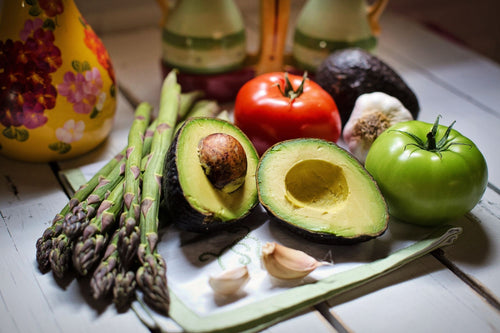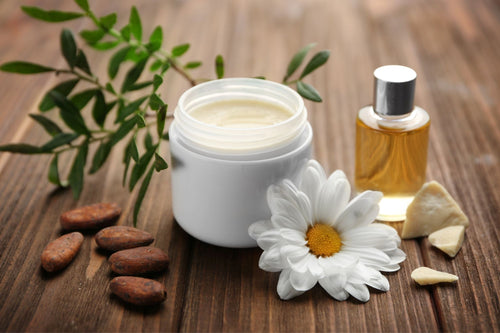Moringa oleifera (Dr. med. Heinz Lüscher)
One of the many names for the Moringa tree is "miracle tree". That says a lot about this interesting plant. The tree is one of the most nutritious plants of all. In the following report, we are particularly interested in the leaves of the miracle tree, which could be described as a natural multivitamin preparation.
Many names for one special tree
German names for the tropical tree Moringa oleifera are Behenbaum, clarifier tree, drumstick tree, horseradish tree or horseradish tree. The last two names derive from the content of mustard oil glycosides, which make the roots of the tree taste like horseradish. I personally like the name Wunderbaum. This name reveals a lot about this special tree. Moringa is one of the most nutrient dense plants in the world and contains 90 essential nutrients!
 Where does Moringa come from?
Where does Moringa come from?
Moringa oleifera belongs to the nut family and is distributed from India across the Arabian Peninsula to East Africa and with a gap to Madagascar and Southwest Africa. Moringa only grows in tropical areas with an average annual temperature of 12 - 40° and at least 500 mm annual precipitation. Moringa trees are about eight meters high, they grow very quickly, up to four meters a year.
Moringa, the perfect food in famine areas
Unfortunately, the extraordinary application possibilities in Africa have largely been forgotten, so that moringa trees are sometimes uprooted as weeds or people even starve to death under moringa trees just because they know nothing about it. The high protein and carbohydrate content makes Moringa the perfect food in famine areas. The lack of vitamin A is the main reason for the high infant mortality rate and the numerous cases of blindness in Africa. Millions of children die every year from diarrhea. These children could be helped with Moringa. Moringa is also an ideal food for pregnant and lactating women in these areas.
Virtually the entire tree (root, bark, seeds, flowers, fruit and leaves) can be used for medicinal purposes. In the following, however, we only consider the powder obtained from dried leaves.
The healthy ingredients of Moringa
Most striking is the high content of proteins, vitamin A, as well as potassium, iron and calcium. In addition, Moringa also contains almost all vitamins, many trace elements, amino acids and secondary plant substances. Moringa can be considered as the best natural multivitamin supplement.
|
vital substances |
Amount in 100 g dried leaves |
Remarks |
|
|
protein |
27.1g |
Contains 10 different amino acids, 2 times more than yoghurt, almost as much as eggs |
|
|
Fat |
2.3g |
Oil can be made from seeds |
|
|
carbohydrates |
38.2g |
||
|
fiber |
19.2g |
||
|
Vitamin A |
18.9 mg |
25 times more than carrots |
|
|
Vitamin B1 |
2.6 mg |
||
|
Vitamin B2 |
20.5 mg |
||
|
Vitamin B3 |
8.2 mg |
||
|
vitamin C |
17.3 mg |
||
|
calcium |
2000 mg |
17 times more than milk |
|
|
iron |
28.2 mg |
|
|
|
magnesium |
368 mg |
||
|
potassium |
1324 mg |
15 times more than bananas |
(Source: Dr. Hans-Martin Hirt, Anamed)
What effects can be expected from Moringa?
Since there are practically no malnourished people in our latitudes, the main effect is apparently absent. But Moringa can be used very well in cachexia, for example. Cachexia is a side effect of severe diseases with significant weight loss and muscle breakdown, general weakness, anemia and severe loss of strength (eg with cancer, AIDS or old age). Moringa can also do good for anorexia. With AIDS patients who are very weak, Moringa restores courage and a certain physical strength. Therefore, together with Artemisia, it belongs to the best AIDS therapy of all.
Supportive effect in cancer
In tumor patients, Artemisia definitely has the higher tumor-inhibiting effect, but Moringa supports the development of the immune system and the inhibition of inflammation in the vicinity of tumors so strongly that a combination is recommended. Since no one is funding studies on this, this combination therapy is used empirically in mission hospitals, with very good results and low costs.
Other uses for Moringa are in nutrient deficiencies, fatigue and exhaustion, high blood pressure, sleep disorders and to support the immune system in infections caused by bacteria, viruses and fungi.
Possible indications for Moringa:
- cachexia
- nutrient deficiency
- tiredness, exhaustion
- AIDS
- type II diabetes
- Cancer
- anemia
- Inflammatory diseases
- high blood pressure
- sleep disorders
- Macular degeneration (senior vision)
- Gentle on the stomach
There are no known contraindications.









